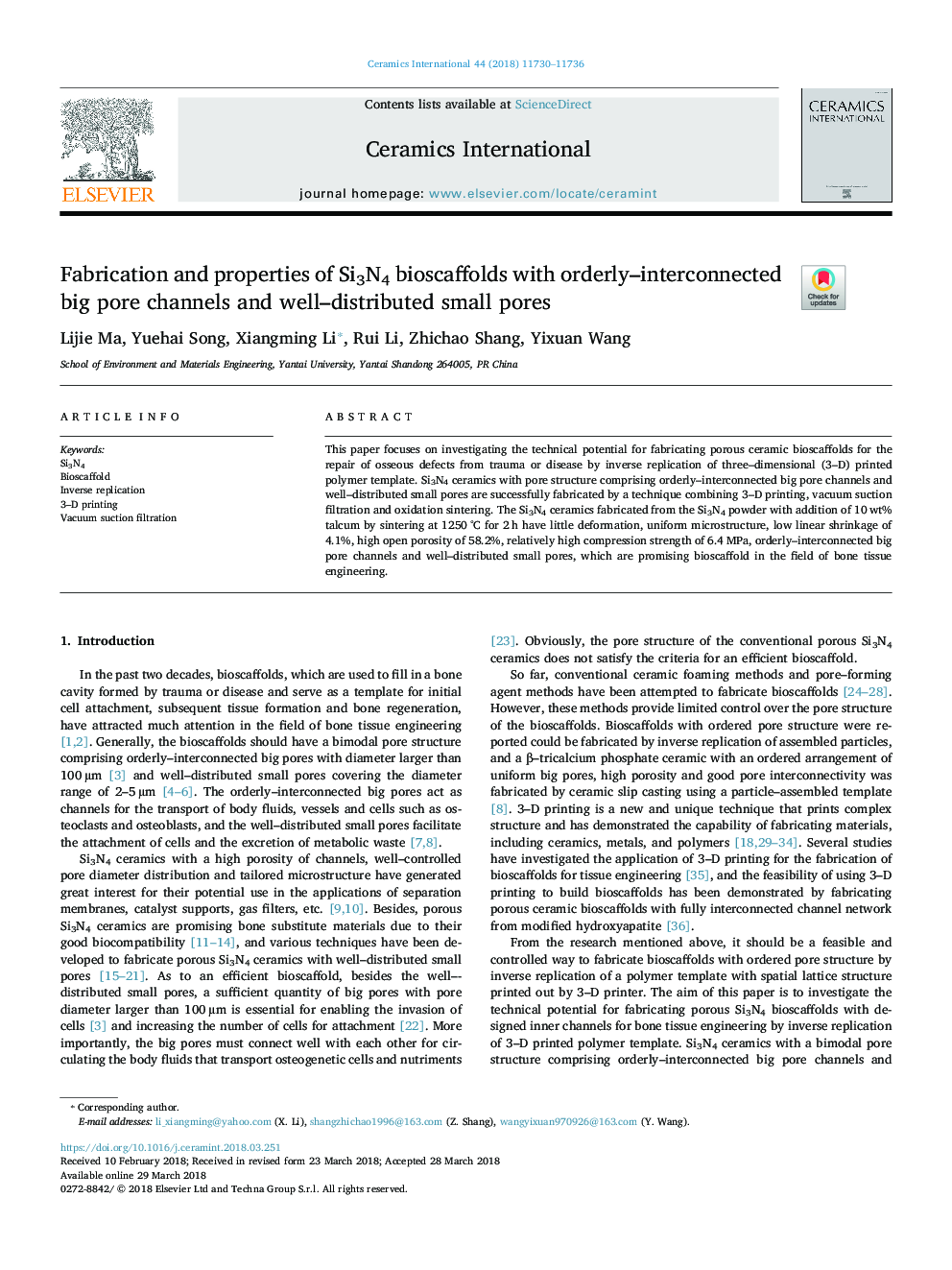| Article ID | Journal | Published Year | Pages | File Type |
|---|---|---|---|---|
| 7887267 | Ceramics International | 2018 | 7 Pages |
Abstract
This paper focuses on investigating the technical potential for fabricating porous ceramic bioscaffolds for the repair of osseous defects from trauma or disease by inverse replication of three-dimensional (3-D) printed polymer template. Si3N4 ceramics with pore structure comprising orderly-interconnected big pore channels and well-distributed small pores are successfully fabricated by a technique combining 3-D printing, vacuum suction filtration and oxidation sintering. The Si3N4 ceramics fabricated from the Si3N4 powder with addition of 10â¯wt% talcum by sintering at 1250â¯Â°C for 2â¯h have little deformation, uniform microstructure, low linear shrinkage of 4.1%, high open porosity of 58.2%, relatively high compression strength of 6.4â¯MPa, orderly-interconnected big pore channels and well-distributed small pores, which are promising bioscaffold in the field of bone tissue engineering.
Keywords
Related Topics
Physical Sciences and Engineering
Materials Science
Ceramics and Composites
Authors
Lijie Ma, Yuehai Song, Xiangming Li, Rui Li, Zhichao Shang, Yixuan Wang,
